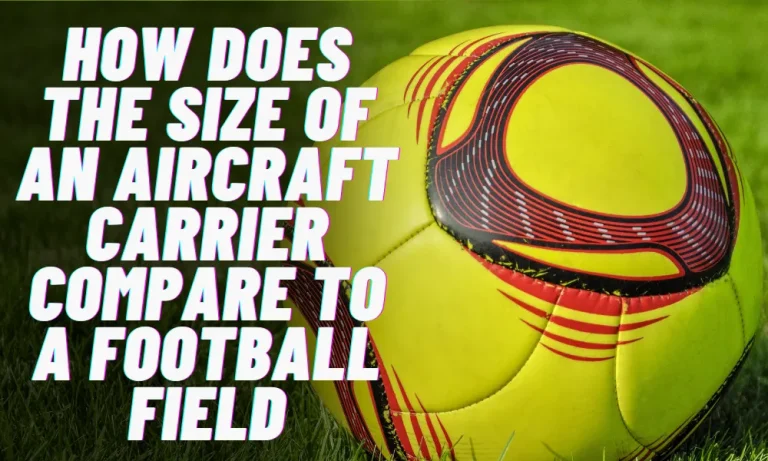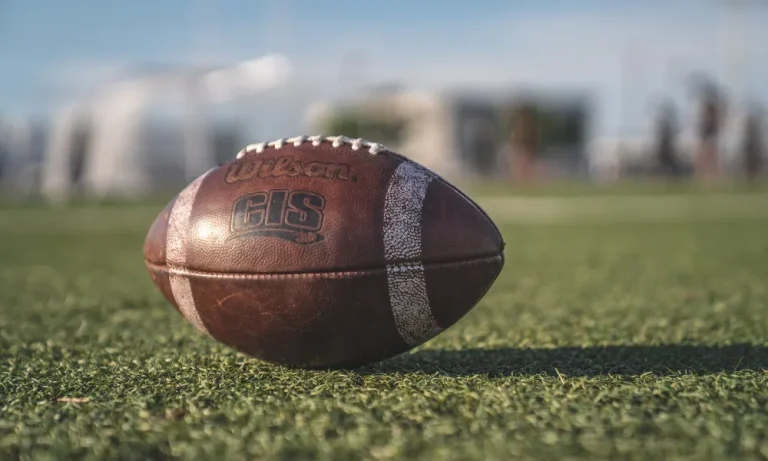How to Set the Edge in Football Effectively?
Introduction
Are you ready to dominate the football field with your defensive skills? If you want to be a formidable force on the gridiron, one crucial aspect you need to master is setting the edge. But what exactly does that mean? In football, “setting the edge” refers to the technique used by defensive players to maintain outside leverage and prevent the offense from gaining yardage around the perimeter. It’s a fundamental skill that can make or break a defense.
In this article, we will delve into the world of setting the edge in football. We’ll explore why it is so vital for a successful defense and provide you with effective techniques to improve your edge-setting abilities. Whether you’re a coach, a player, or simply a passionate football enthusiast, this guide will equip you with the knowledge and tools to set the edge in football effectively. So, let’s get started and take your defensive game to the next level!
What is Setting the Edge?
Setting the edge in football is a fundamental defensive technique that involves maintaining outside leverage to prevent the offense from gaining yardage around the perimeter. As an edge defender, my role is crucial in stopping the run and containing the offense.
When I set the edge, I position myself on the outermost part of the defensive line, ensuring that the ball carrier cannot get past me to the outside. By maintaining outside leverage, I force the play back inside where my teammates can make the tackle. This technique is essential for limiting big gains and forcing the offense into predictable running plays.
Setting the edge is not just about physical positioning; it’s also about understanding the offense’s tendencies and play-calling. By studying film and recognizing formations, I can anticipate where the ball is likely to go and adjust my positioning accordingly. This allows me to effectively read and react to the play, ensuring I am in the best position to make a play and limit the offense’s options.
The ability to set the edge is crucial for stopping the run and containing the offense. When I successfully set the edge, I force the running back to either cut back inside or run into the waiting arms of my teammates. By limiting the offense’s options and funneling plays back towards the center of the field, I help disrupt their rhythm and make it harder for them to execute their game plan. Setting the edge is a foundational skill that every defensive player must master to contribute to a successful defense.
Key Principles of Setting the Edge
To effectively set the edge in football, there are key principles that I must understand and apply in my gameplay. These principles include understanding gap responsibility and alignment, maintaining proper leverage, emphasizing hand placement and footwork, and employing strategies to shed blocks effectively.
Understanding gap responsibility and alignment: As a defensive player, it’s crucial to understand my assigned gap responsibility within the defensive scheme. This means knowing which gap I am responsible for defending against the run. Proper alignment ensures that I am positioned correctly to set the edge and maintain outside leverage, preventing the offense from gaining ground around the perimeter.
Maintaining proper leverage against offensive linemen and ball carriers: Setting the edge requires me to engage with offensive linemen and ball carriers. By maintaining proper leverage, I can control the direction of the play and force the ball carrier to make decisions that play into the defense’s hands. This involves using my hands and body positioning to keep the offensive player from gaining an advantage.
Importance of hand placement and footwork in setting the edge: Hand placement is crucial in setting the edge. By using my hands effectively, I can control the offensive player’s movements, shed blocks, and maintain outside leverage. Additionally, proper footwork is essential for maintaining balance, explosiveness, and agility, allowing me to react quickly and adjust to the offensive player’s movements.
Techniques for Setting the Edge
As a defensive player tasked with setting the edge, there are several techniques that I can employ to effectively fulfill my role. These techniques include the bull rush, swim move, rip move, arm extension, and gap control strategies.
Bull Rush: The bull rush technique utilizes my strength and leverage to hold the edge against offensive blockers. By driving my opponent backward with a powerful push, I can create separation and maintain outside leverage, effectively preventing the offense from gaining ground around the perimeter.
Swim Move: The swim move is a quick and effective technique that allows me to disengage from blockers. By using a rapid arm motion to swim over the blocker’s shoulder, I can free myself from their grasp and regain control of the edge. This move requires agility and timing to catch the blocker off guard and create an opening.
Rip Move: The rip move is another technique that helps me fend off blockers and maintain outside leverage. By forcefully bringing my arm up and across the blocker’s body, I can create separation and maintain control of the edge. This move relies on a powerful motion and proper timing to overpower the blocker and disrupt the play.
Arm Extension: Extending my arms is crucial in setting the edge. By keeping my arms extended, I can create distance between myself and the blocker, preventing them from getting a grip on me. This allows me to maintain outside leverage and effectively control the direction of the play.
Film Study: Analyzing Successful Edge Setting
Film study is a valuable tool for me to improve my edge-setting skills. By carefully examining game footage, I can analyze successful edge-setting techniques employed by professional players, identify common mistakes, and learn how to avoid them.
Examination of game film to highlight effective edge-setting techniques: By studying game film, I can observe and analyze successful edge-setting techniques used by experienced players. This allows me to see these techniques in action and understand how they contribute to the player’s success. I can observe their hand placement, footwork, leverage, and overall execution to gain insights into what works effectively in setting the edge.
Breakdown of professional players’ techniques and strategies: Analyzing game film provides an opportunity to break down the techniques and strategies used by professional players. I can closely observe their movements, decision-making, and positioning to gain a deeper understanding of their approach. This allows me to learn from their expertise and incorporate their successful techniques into my own gameplay.
Identifying common mistakes and how to avoid them: Film study also helps me identify common mistakes that players make when setting the edge. By recognizing these errors, I can learn how to avoid them and make better decisions on the field. Whether it’s improper leverage, ineffective hand placement, or being out of position, studying film allows me to recognize these mistakes and take corrective measures to improve my performance.
Drills and Exercises for Improving Edge Setting
Improving my edge-setting skills requires focused drills and exercises that target the necessary attributes of strength, speed, agility, hand-fighting skills, block shedding, and decision-making. Here are some essential drills that can help me develop these skills:
Essential drills to develop strength, speed, and agility required for setting the edge: Strength, speed, and agility are crucial for setting the edge effectively. Drills such as sled pushes, resistance band exercises, and ladder drills can help me develop explosiveness, quickness, and overall athleticism. These drills focus on building lower-body strength, improving footwork, and enhancing my ability to quickly change direction.
Individual and group exercises to enhance hand-fighting skills and block shedding: Hand-fighting skills and the ability to shed blocks are essential for a successful edge setter. Individual and group exercises such as hand placement drills, blocking pad drills, and one-on-one drills with teammates can help me improve my hand-fighting techniques and develop the strength and technique needed to shed blocks effectively.
Implementing live-action scenarios to simulate game situations and improve decision-making: To improve my decision-making skills when setting the edge, it is important to incorporate live-action scenarios into my training. This can include scrimmage sessions, 7-on-7 drills, or game situation simulations. By practicing in realistic game-like scenarios, I can sharpen my ability to read and react to offensive plays, make quick decisions, and execute proper edge-setting techniques.
Tips for Communicating and Coordinating with Teammates
When it comes to edge setting, effective communication and coordination with my fellow defenders are crucial. Here are some tips to ensure seamless integration within the defensive unit and maximize the effectiveness of our edge-setting efforts:
The importance of effective communication and coordination with fellow defenders: Communication is key in any team sport, and football is no exception. When setting the edge, it is essential to communicate with my teammates to ensure we are all on the same page. Clear and concise communication helps us coordinate our movements, assignments, and responsibilities, allowing us to work together as a cohesive unit.
Strategies for seamless integration within the defensive unit to maximize edge-setting effectiveness: To maximize our effectiveness as edge setters, it is important to work in sync with the rest of the defensive unit. This means understanding each other’s roles and responsibilities, knowing when to switch assignments, and supporting each other in maintaining gap integrity. By practicing together and building trust, we can seamlessly integrate our efforts and create a strong defensive front.
Understanding defensive calls and adjusting positioning based on play recognition: As an edge setter, I must have a solid understanding of the defensive calls and formations. This knowledge allows me to recognize offensive plays and adjust my positioning accordingly. By being aware of the defensive scheme and the expected responsibilities of each player, I can make quick decisions and react appropriately to counter the offense’s strategy.
Technical FAQs – How to Set the Edge in Football Effectively
What does it mean to “set the edge” in football?
Setting the edge refers to the defensive technique of sealing off the outside running lane, forcing the ball carrier back inside towards the pursuit of the defense.
What are the key techniques for effective edge setting?
Key techniques include maintaining proper leverage, using strong hand placement, engaging the blocker with a low pad level, and maintaining gap integrity.
How can I improve my strength for better edge setting?
Focus on building lower-body strength through exercises like squats and lunges, as well as upper-body strength through bench presses and shoulder presses.
How important is footwork in edge setting?
Footwork is crucial for maintaining balance and quickness. Practice ladder drills and cone drills to improve agility and foot speed.
How can I effectively shed blocks while setting the edge?
Use your hands to control the blocker’s chest, keep your eyes on the ball carrier, and use techniques like rip moves or swim moves to disengage from the blocker and make the tackle.
Conclusion
Setting the edge in football is not just a fancy term; it’s a crucial aspect of a successful defense. By maintaining outside leverage and effectively containing the offense, you can greatly impact the outcome of the game. Throughout this article, we’ve explored the definition and importance of setting the edge. We’ve also provided you with a range of effective techniques, drills, and strategies to improve your edge-setting skills.



